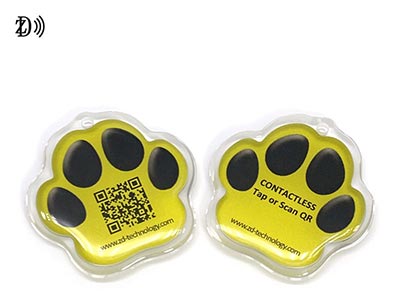NFC (Near Field Communication) tags are manufactured through a series of steps that involve creating the integrated circuit (IC), attaching the IC to an antenna, and then encapsulating the entire assembly. Here is a detailed overview of the process:
1. Design and Fabrication of the IC (Integrated Circuit)
Design: The process starts with the design of the NFC chip, which includes the digital circuitry needed to store and process information as well as the analog components required for communication via radio waves.
Wafer Fabrication: The designed circuit is then fabricated on silicon wafers using semiconductor manufacturing processes, such as photolithography, doping, etching, and deposition.
Dicing: Once the ICs are created on the wafer, the wafer is cut into individual chips through a process called dicing.
2. Antenna Creation
Design: The antenna, which is typically made of a thin copper coil, is designed to match the requirements of the NFC chip and the intended application.
Substrate Preparation: The antenna is printed or etched on a flexible substrate, such as PET (polyethylene terephthalate) or other flexible materials.
Antenna Fabrication: Methods like screen printing, etching, or conductive ink printing are used to create the antenna pattern on the substrate.
3. Assembly of the IC and Antenna
Chip Attachment: The NFC IC is attached to the antenna. This can be done using various techniques:
Flip-Chip Bonding: The IC is flipped upside down and bonded directly to the antenna with conductive adhesive.
Wire Bonding: Tiny wires are used to connect the IC to the antenna, though this method is less common for NFC tags.
Encapsulation: The connected IC and antenna assembly are encapsulated to protect them from physical damage and environmental factors. This is often done using materials like epoxy or other resins.
4. Final Testing and Quality Control
Electrical Testing: Each NFC tag is tested to ensure it meets the required electrical specifications and functions correctly.
Quality Control: Additional quality checks are performed to verify the durability and reliability of the tags.
5. Encoding and Packaging
Encoding: Data is written to the NFC tags according to their intended use. This might include writing unique identifiers or specific information that the tag will communicate.
Packaging: The finished NFC tags are then packaged in various forms depending on their application. They can be incorporated into labels, cards, stickers, or other formats suitable for end-use.

Manufacturing Methods
Roll-to-Roll (R2R) Processing: This method is commonly used for mass production. It involves continuous processing of flexible substrates that are unwound from a roll, processed, and then rewound.
Sheet-to-Sheet Processing: Used for smaller production volumes or specialized tags. Individual sheets are processed rather than continuous rolls.
Key Considerations
Material Selection: Materials used for the substrate, adhesive, and encapsulant are chosen based on the application requirements, such as flexibility, durability, and environmental resistance.
Cost Efficiency: Manufacturing processes are optimized to reduce costs while maintaining quality, especially for high-volume production.
Compatibility and Standards: NFC tags must comply with industry standards (like ISO/IEC 14443 and ISO/IEC 15693) to ensure compatibility with NFC readers and devices.
The integration of these processes results in a reliable and versatile NFC tag that can be used in a wide range of applications, from contactless payments and access control to inventory management and interactive advertising.





